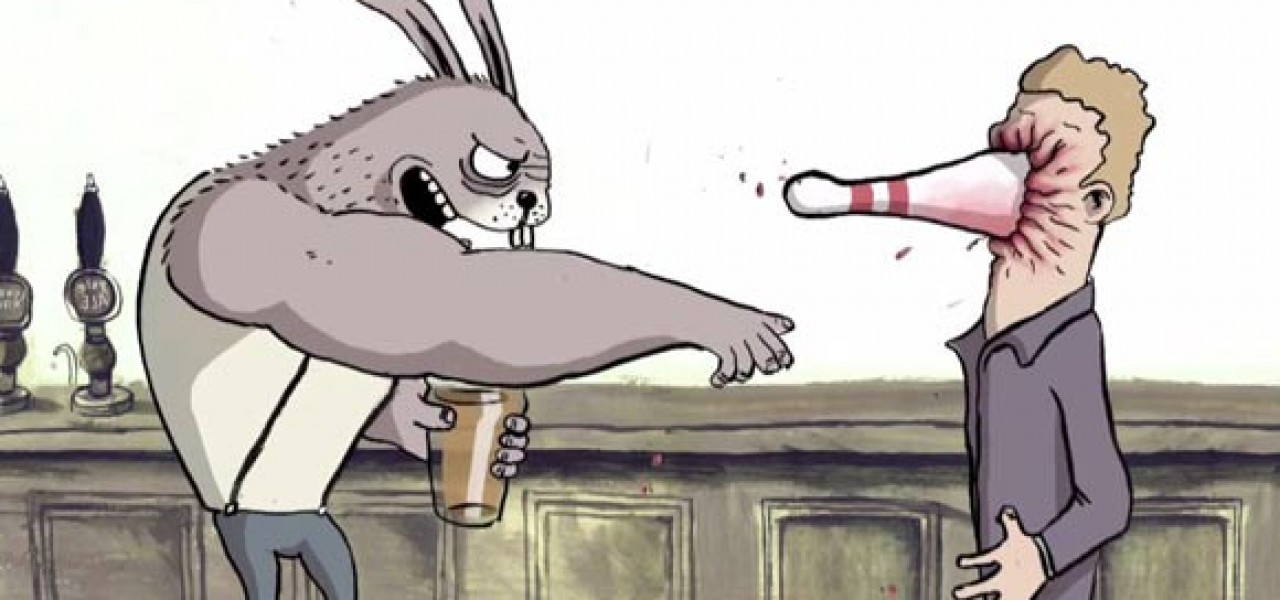
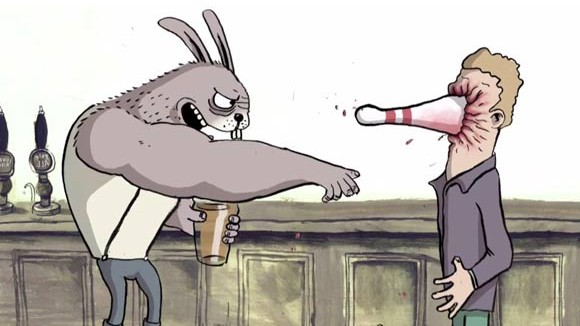
“Random Acts”: Creating A Space for Independent Animated Films in Britain
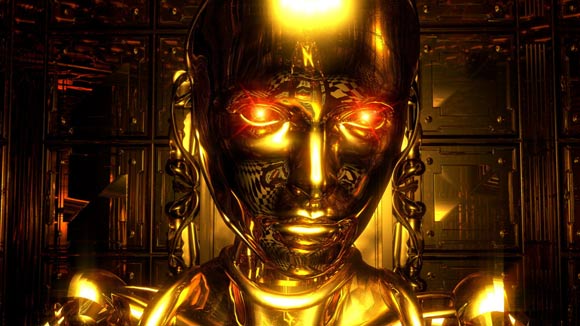
In October 2011, Britain’s Channel 4 began airing a new initiative entitled Random Acts; this was designed as a space for specially-commissioned shorts of up to three minutes, covering a range of media from spoken word to ballet. Initially, the films in the series were to run for five nights a week over the course of a year, airing 260 films; before it reached its end Channel 4 commissioned an additional 260 films, and Random Acts is set to last into the new year and possibly further.
Here is Channel 4’s own description of the series:
With the mission ‘television as art, not television about art’, Random Acts allows artists, performers and experimental filmmakers to create their own pieces, unmediated by presenters and unfettered by television conventions. The short-form films are part of Channel 4’s continuing innovative approach to arts content—using the screen creatively to support and nurture new and contemporary artistic talent.
Amongst the media on offer is animation. Indeed, as contributors from outside animation include such well-known figures as poet Benjamin Zephaniah, the animators working with Random Acts have definitely found themselves in good company.
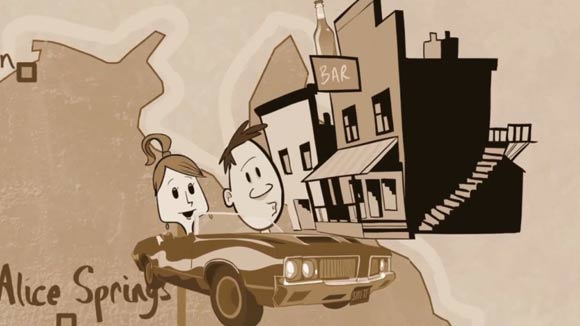
Some of the people involved are familiar faces from the current crop of British animators. Chris Shepherd (Dad’s Dead, Who I Am and What I Want) came up with Lifeclass, featuring the distinctive cat-based designs of cartoonist Jim Medway; Robert Morgan (Bobby Yeah) uses his characteristic approach to stop-motion horror with Invocation; David Shrigley (Who I Am and What I Want) has made no less than five shorts for the series; and Cowboys creator Phil Mulloy has topped Shrigley with a total of six films.
Other shorts are the work of relative newcomers to the field. Foxy was made by Stephanie Thandi Johnstone, who graduated from a BA Fine Art course in 2012, while Spatula Head’s Lesley-Anne Rose has only one prior directorial credit to her name (I Once Had a Brother, from 2011).
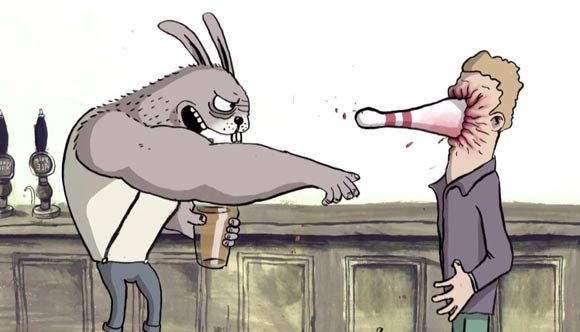
The animation produced for Random Acts varies in tone, with no set house style. On the one hand, there are a few resolutely populist pieces: 12foot6 revives Dave Anderson’s nineties comic character Bastard Bunny for Bastard Bunny in Boozers Ain’t Wot They Used To Be, a blue humor cartoon which could conceivably be extended into a sitcom or a sketch comedy. Meanwhile, other directors are more experimental—a case in point being Elizabeth Hobbs, whose short Imperial Provisor Frombald uses hand-carved stamps pressed directly onto film to tell the true story of a suspected vampire being exhumed in eighteenth-century Serbia.
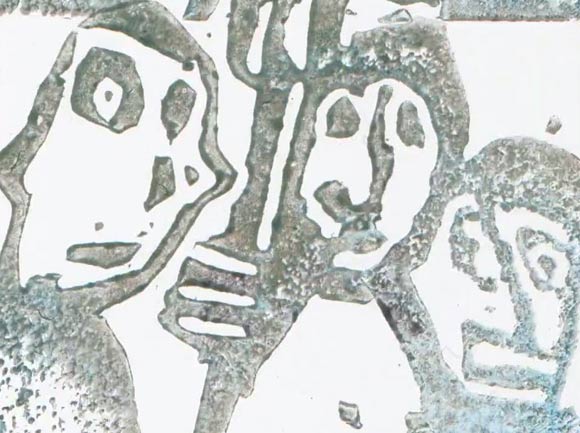
It is clear, however, that these films generally emphasize concept over technique. Although some aim for a more robust aesthetic—such as the retro look of Lupus films and Tegn’s Conspiracy, or Bastard Bunny’s humorous character animation—Random Acts is ultimately a place for ideas rather than refined execution.
Unfortunately, the films are not placed in a way that will net them a large audience: they are shown in late night slots at varying times, hence the “random” tag. If we look at the broadcast history, we can see the program was shown at 12:40 on one particular night, 11:55 the next, and 1:20 the night after that. These slots are squeezed in between full-length programmes—so, for example, Heather Phillipson’s short Splashy Phasings was shown between a late repeat of the comedy panel game 8 Out of 10 Cats and a televised poker tournament.
Looking through the history of Channel 4 animation, this is something of a step down. In the Nineties, the channel’s animation initiative 4mations was a dedicated block that would show several shorts at a time, similar to MTV’s Liquid Television. Even when 4mations ended, animated shorts were still sometimes slipped into the 5-minute slot after the evening news: for example, Gaëlle Denis’ 2011 short City Paradise was shown in a 7:55pm post-news slot as part of 3 Minute Wonder, a program comparable to Random Acts.
Taking a glass-half-full look at things, however, it is heartening to see that Channel 4 is still supporting animation. The channel’s pioneering commitment to the medium has been declared dead more than once, but Random Acts shows that Channel 4 animation is still with us, and is adapting to a new media landscape—one in which short films have found the perfect home on the Internet, rather than on television.
Take a look HERE to see all of the animated shorts produced for Random Acts.
Image Captions (Top to Bottom)
1. The Reading, one of AL & AL’s contributions to Random Acts.
2. Kajal Verma’s A and E Down Under.
3. Bastard Bunny in Boozers Ain’t Wot They Used To Be.
4. Imperial Provisor Frombald, by Elizabeth Hobbs
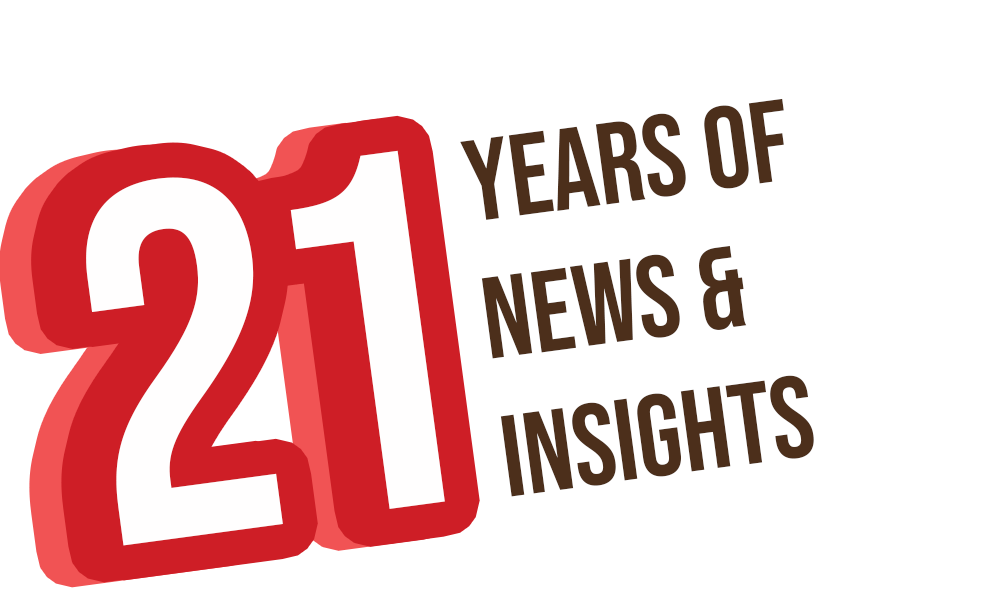
.png)